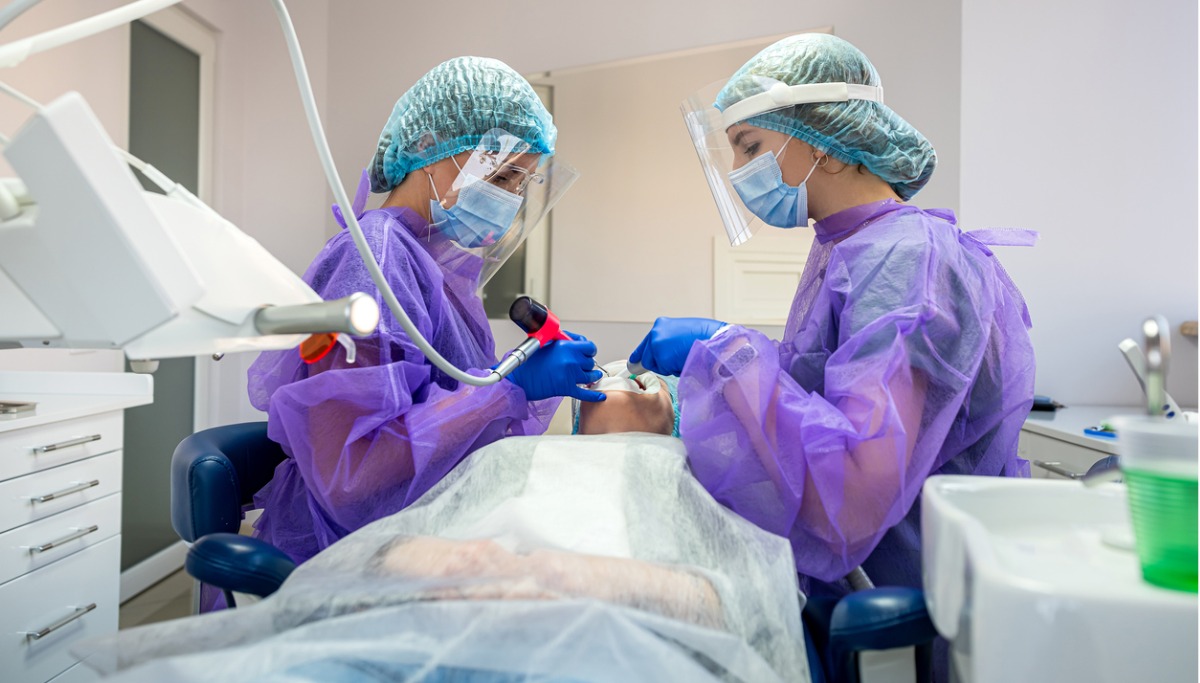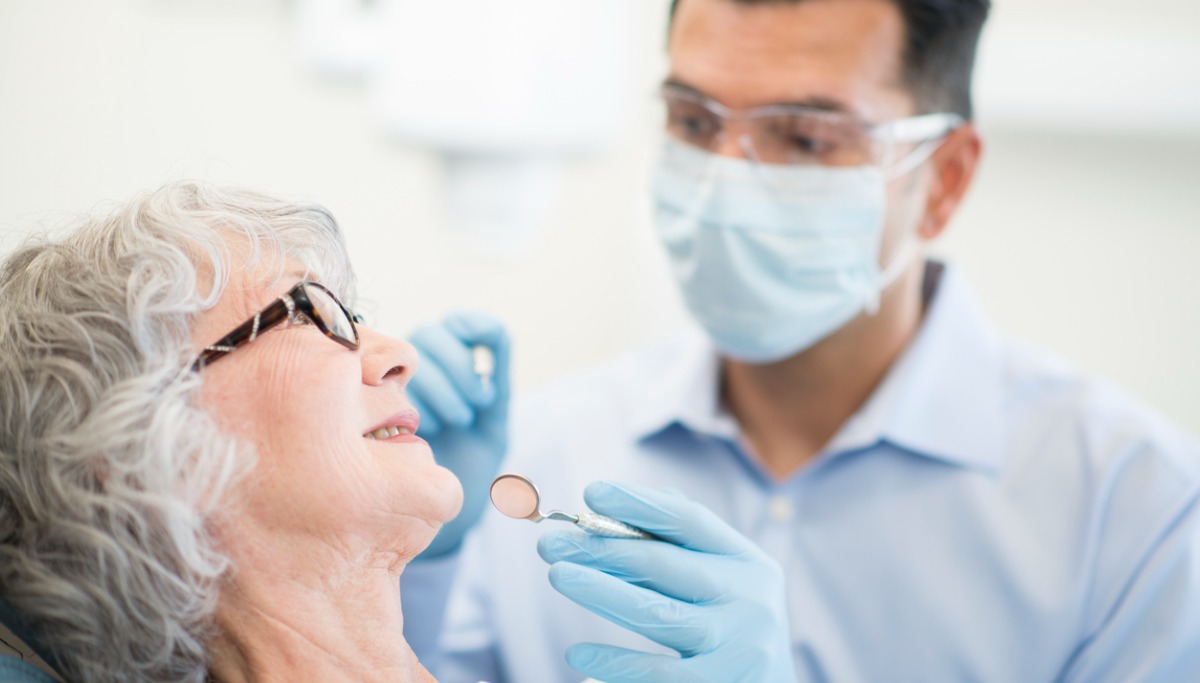What are dental implants?
Dental implants function as replacement tooth roots to support artificial teeth or dental appliances and hold them in place. They are most commonly screw-like posts that are surgically placed in the upper or lower jaw.
A dental implant consists of an implant body and dental abutment, with a dental crown attached. Each part works with the other to create an artificial tooth:
- Implant body: This is the screw that is placed in your jawbone. It eventually fuses with the jawbone in a process called osseointegration.
- Dental abutment: This is the connecting piece that joins the implant body to the dental crown. It is usually placed after the implant has bonded to your jawbone.
- Dental crown: A tooth-shaped cap that is secured to the abutment. It looks and functions like a regular tooth.
Replacing damaged or missing permanent teeth with dental implants offers numerous benefits. Implants can help you eat, speak, and feel more confident in your physical appearance.
Types of dental implants
There are two main types of dental implants:
- Endosteal implants are the most common type of implant. They are placed into the jawbone and can be used as an alternative to dental bridges or removable dentures.
- Subperiosteal implants are used when you do not have enough healthy jawbone for an endosteal implant, either due to bone loss or the shape of your jaw. They are placed under the gums but rest on top of the jawbone.
There are several types of implant arrangements depending on how many teeth need to be replaced.
- Individual tooth implants are used to replace a single missing tooth.
- Multiple teeth implants are typically required to replace more than one missing tooth.
- Full-mouth dental implants are used when all your teeth are missing. The exact number of implants used will depend on your oral health history and how much healthy bone you have.
- Mini implants are used most often to stabilize lower dentures. They are smaller and narrower than standard implants.
Alternatives to dental implants include bridges and dentures. Veneers are an option for changing the look of existing teeth but cannot be used to replace missing teeth.
What are dental implants made of?
A number of materials can be used to create dental implants, but they are most often made with titanium or zirconia.
Titanium
This strong, durable metal is the most common material used for dental implants. Titanium implants offer several benefits that may make them the best choice for you:
- They can be made as either one piece (implant and abutment as a single unit) or two pieces (implant with separate abutment piece). The two-piece option is useful when an implant must be placed in the jawbone at an angle.
- Titanium implants are very compatible with the human body and resistant to fractures and corrosion.
- They are shown to be safe and long-lasting, with studies showing that titanium implants have a success rate of 97% and a 10-year survival rate of nearly 99%.1
Titanium implants are not recommended for people with allergies to metal or certain autoimmune conditions, such as type 1 diabetes or rheumatoid arthritis.
Zirconia
This is a safe, stable ceramic and the second most common material used for implants. Zirconia implants are a more recent invention than titanium options and offer two primary benefits:
- Zirconia can be beneficial if you have metal allergies or medical conditions that prevent the use of titanium.
- The absence of metal sometimes provides an aesthetic benefit, especially if you have gum recession. With a titanium implant, the dark metal may be visible near the gumline.
However, zirconia does have a few drawbacks compared to titanium:
- It is a more expensive material than titanium.
- Zirconia is primarily used for individual tooth implants, not multiple teeth or full-mouth implants.
- These implants typically only come as one piece, although there are a limited number of two-piece options. As a result, they may not be an option for implants that must be placed at an angle.
Other materials
Other materials can be used for dental implants if titanium or zirconia aren’t suitable for you. These include polymers (synthetic materials), ceramics, and some metals, such as gold or cobalt-based alloys.
Dental implant sizes
Dental implants are not one-size-fits-all. Implants come in different lengths and widths, and your dentist or oral surgeon will choose the appropriate implant based on your unique needs. They will consider many factors, including the size and shape of your jawbone, the number of teeth missing, the health of surrounding structures (such as your sinuses), and the position of your remaining teeth.
Standard dental implants
The implant body and dental abutment of standard dental implants usually have a diameter between 3 and 6 millimeters.
Because they are stronger and longer lasting than mini dental implants, these are still the best and most common option if your jaw is healthy enough to hold them.
Potential downsides to standard dental implants include:
- They are more expensive than mini dental implants.
- The procedure involves more invasive surgery and requires additional healing time.
- Standard size implants may require more office visits than mini dental implants, so the duration of the entire treatment is longer.
Mini dental implants
These are smaller than standard dental implants and typically have a diameter of less than 3 millimeters. They also combine the implant body and dental abutment into a single screw-like piece that can be placed at the same time – removing the need for a separate appointment to secure the abutment.
Mini implants can be placed into the jawbone after a small incision. Their placement is usually very simple, and most people can resume normal activities quickly.
Mini dental implants are most often used if your jawbone is too small or if space is too narrow to hold a standard dental implant. Mini implants can also be effective as long-term support for dentures.
They offer a few benefits over standard dental implants – the cost is usually lower, they are less invasive, and they typically require fewer dental office visits.
However, mini dental implants are not as strong or long-lasting as standard size implants. As a result, they will likely need to be replaced eventually.
Dental implant procedure
Prior to implant surgery, your dentist or oral surgeon will also do a thorough assessment of your jaws and available bone support. Additional procedures, such as bone grafts or sinus procedures, may be required before an implant can be placed.
Dental implant surgery involves multiple steps, starting with removal of the damaged tooth and ending with placement of the artificial tooth. Placement of standard dental implants is an outpatient surgery and most often performed in stages over the course of several months. Most of this time will be spent between procedures, which allows you to heal and gives your jaw time to bond with the implant body.
The two most common types of dental implant procedures are:
- In the bone (endosteal implant): This type of implant procedure is performed most often. It involves surgically placing a screw (typically made of titanium) into your jawbone, so the implant can hold the artificial tooth in place.
- On the bone (subperiosteal implant): This method is used if your jawbone cannot support an endosteal implant. A subperiosteal implant is a metal frame placed between the jawbone and gums, underneath the periosteum (a thin layer of tissue between the gums and jawbone). Over time, your gums heal, and the frame fuses to your jawbone.
The specifics of how the dental implant surgery is performed may vary depending on your overall health, oral health history, and the type of implant used.
Summary
Dental implants are safe and long-lasting when they are appropriately placed and properly cared for. By replacing damaged or missing teeth, they support your ability to chew, speak, and feel comfortable with your appearance.
If you are interested in dental implants, consult your dentist to see if they may be right for you.
1Based on 2022 Delta Dental internal data








